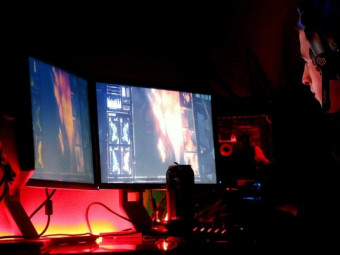A Practical Introduction To The Bacnet Protocol
Tags: HVAC
Learn the fundamentals of the BACnet protocol using both a theoretical and practical approach
Last updated 2022-01-10 | 4.7
- Acquire an appreciation for the creation of the BACnet protocol- Understand the concept of Devices
- Objects and Properties within BACnet
- Understand the data is transferred on BACnet MS/TP and BACnet/IP networks
What you'll learn
* Requirements
* Working knowledge of the process control devices in a typical Process Automation or SCADA system* Basic working knowledge of the Modbus RTU protocol.
* Basic understanding of binary systems and computer memory
Description
BACnet stands for "Building Automation and Control Network".
With the issue of energy conservation on the rapid rise around the world, thousands of buildings have monitoring systems in place to measure and maximize energy efficiency. This is done by the effective centralized monitoring and control of systems like Lighting, Security, Air-Conditioning, Heating, and so much more.
The BACnet protocol is used heavily to interconnect that type of equipment in buildings so that energy efficiency goals can be achieved. Thousands of buildings in the US, Europe and around the world use BACnet.
You should get to know this protocol as it will allow you to expand your expertise and opportunities in the field of Building Automation.
There is quite a bit of info on BACnet available on the Internet, but not much showing BACnet communications in a very practical way. And that's what I am going to do in the course.
At the end of my course, you are not only going to understand the BACnet theory but I am going to show you how to use BACnet hardware and software in my usual practical approach.
Who this course is for:
- Electrical Engineers
- Electrical Technicians
- Electrical Tech or Engineering Students
- Process Control Technicians and Engineers
- Process Automation Engineers
- Programmers working in the Process Automation field
Course content
8 sections • 26 lectures
Introduction Preview 05:04
Accessing Attached Resources and Setting Optimal Video Resolution Preview 02:23
The Strategy for Learning BACnet Theory Preview 03:24
The strategy of using the Modbus protocol as a jumping off point for BACnet theory is explained.
BACnet Theory Basics using a Modbus example - Part 1 Preview 03:48
A typical Modbus scenario is used to open the way into the theory behind BACnet. - Part 1
BACnet Theory Basics using a Modbus example - Part 2 Preview 07:18
A typical Modbus scenario is used to open the way into the theory behind BACnet. - Part 2
Introducing the Concept of a Property and an Object Preview 03:19
Using Modbus as a jumping off point once again, the method in which BACnet devices store data in their memory is explored.
More on BACnet Properties and Objects Preview 06:32
The concept of Object Types is explored in this lecture, as well as the need for multiple properties within a single object.
Understanding Object Instances and Devices Preview 05:54
A single device can have multiple Objects of the same type. Each object is referred to as an instance of the object and will have a unique identifier.
Downloading the "Yabe" Bacnet Explorer Application Preview 03:45
This application is known as a BACnet Explorer application which is essentially a client application with the ability to "explore" a BACnet network.
Establishing Communications between Devices Preview 07:23
The Yabe BACnet explorer is started as well as the BACnet device simulator application. Then an initial connection is made between the two.
Looking at the Device and Analog Input Objects Preview 06:09
The properties of the device and analog input objects are explored and explained.
Looking at the Analog Value and Binary Value Objects Preview 05:08
The properties of the analog value and binary input objects are explored and explained.
Looking at the Multi State Value and String Objects Preview 05:13
The properties of the multi-state value and character string objects are explored and explained.
Setting up Real-Time Monitoring Preview 05:19
Setting up the Yabe application to performing real-time monitoring of the device simulator is illustrated.
BACnet Protocol Network Layering Preview 03:22
An examination of the BACnet protocol layering model and comparison with the standard OSI model.
BACnet MS/TP and BACnet/IP Preview 08:29
The two main types of BACnet networks in the field are MS/TP and IP. How both of them work is explored in this lecture.
BACnet Routers and Gateways Preview 05:04
BACnet routers and gateways allow for the creation of BACnet internetworks.
What we are going to do in this Section Preview 04:16
A look at what we are going to do in this very practical section.
A Look at the Equipment on my Workbench / Desk Preview 02:07
A look at the connection from the BACnet device through the USB-toRS485 converter and then to the laptop running Yabe.
Connecting to and Discovering the BACnet MS/TP Device using Yabe Preview 04:24
Yabe is used to connect to the MS/TP network and discover the DIO device. The device is then interrogated to acquire all of the objects.
A Closer Look at the Objects and their respective Properties Preview 03:23
The properties of the device - binary input, binary output, analog value, device - are examined.
Reading Inputs / Writing to Outputs via BACnet MS/TP on the Device Preview 03:07
The inputs on the device are actuated as well as outputs are written to using the Yabe application.
Introducing BACnet Services using Modbus as a Reference Preview 03:11
BACnet services are introduced using commands in Modbus as a jumping off point.
Looking at Key BACnet Services in more Detail Preview 08:31
The most commonly used BACnet services are singled-out and their operation examined in detail.
Using Yabe and the Room Simulator to Examine BACnet Services Practically Preview 06:10
The Yabe Explorer and the Room Simulator are once again used to simulate a BACnet conversation. But this time, the focus is on the services being execute from user actions.








 This course includes:
This course includes:
![Flutter & Dart - The Complete Guide [2022 Edition]](https://img-c.udemycdn.com/course/100x100/1708340_7108_5.jpg)















